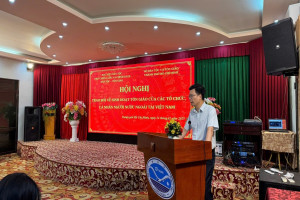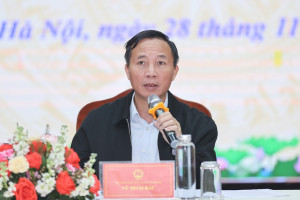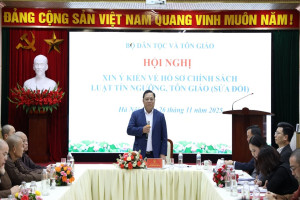We can say that Japan is one of many countries in the world has many religions and special characteristics.
Japan has many beliefs, traditional customs and different religions. In spring Japanese people usually go to Shinto shrines or Buddhist temple. However, they often hold parties and give and receive presents at Christmas. Wedding is often held in Shinto style but funeral rite is carried out according to Buddhist ritual. Some people follow two or three religions. According to 1995 year book of the Association of Culture, in Japan there were 219,83 million religious believers ( twice Japan’s population at that time). Shinto is an ancient religion of Japan. It sprang from the view of animism of ancient Japanese people . According to Shinto the spiritual powers exist in natural world so they should be worshipped. Shinto is recognized as religion of community. In Japan, there are many Shinto temples and shrines where worship guardian angels. Japanese people worship heroes , excellent leaders of people and ancestors according to Shinto ritual . Japanese people respect Confucianism but in fact Confucianism is considered as moral standards rather than a religion. Confucianism entered Japan in 6th century, it has influenced thinking and behavior of Japanese people. Later, its impact was weaking. In this article, the writer focuses on Shinto.
More than 100 million believers, 90 thousand temples and 10 thousand monks, Shinto is the most important religion in Japan. Shinto is the combination of beliefs and the worship of Kamis. Kamis are gods, for example , God of Sun, God of Thunder, God of River and the souls of the death ( Emperors, ancestors and heroes of country).
Shinto is the indigenous religion, it was born from the primitive communal society under animistic form. When the field was lush with ripening rice, deities appeared. People believed that deities lived in mountain so they had bizarre shape. Water often rises from mountain, water need for cultivation. God of river can water or create flood. By the third century, the village (mura), cell of society was established. It was social factor of Shinto. Shinto has connected closely with Buddhism in faith, funeral ritual. It has also borrowed many elements of Taoism. Shinto has patriotic characteristic of Japanese nation. At present, some Japanese people consider themselves as believers of Shinto. Shinto does not have any commandments or regulations. 150 years ago, Japanese scholar wrote that “ Japanese people are honest in religious practice, they do not need moral theory. Chinese people dramatize moral theory because they are not honest in religious practice”. Some other Japanese people also think that human being was created by the spirit of two Creators ( Izanagi and Izanami). Therefore, they are endowed with the knowledge of what they must do and avoid. They do not worry about moral system. Because Japanese people are really kind- hearted. They never worry about sin. Japanese people dignify giving thanks than telling their mistakes. Shinto believers are not interested in next incarnation. They have not any teaching about after life and they do not pray for happiness in the future. They pray for concrete things such as food, interest of nation.
Shinto is widely developed because it worships many deities. According to documents in 901 AD, there were three thousand shrines in Japan and 3000 deities were worshipped . Later, there are more and more shrines in Japan. Today Japanese people often visit the shrines where worship God and Goddesses to pray for good harvest and prosperity of country. They have to purify before going to the place of worship at home or in the shrines. In the shrines, visitors often wash their hands and months before enter into the temple. When they are purified, they will make an offerings and pray. Japanese house is really clean and tidy. Altar of Shinto is too . In the old days, Japanese people believed that purification was very important to Gods. Later, Japanese people thought that Gods wanted that morality should be purified. The purification ceremony symbolizes two above problems.
Shinto believers use the symbol of gods. On the altar, there are ancestral tablets or the pieces of paper with the names of Gods. On the altar there are flowers, wine and a lamp. Every day believers of Shinto pray before altar . The Shinto priests often guide the official ceremonies in the great festival. They do not teach in the weekly ceremonies. They have responsibility to preserve sacred objects in the temple.
Harvest festival (Matsuri) is the biggest festival. It is held in New Year and in rice crop. Matsuri is held in summer to worship local gods. In this festival people usually drum, dance or drink sake. In big cities, Matsuri festivals remind the spirit of Shinto and community. Later, this spirit is transformed into activities of enterprises, schools, clubs.
In Emperor Meiji ( 1868- 1912) Japan is modernized following the Western model. Shinto was recognized as national religion by Mikado ( Japanese Emperor). In 1890 Shinto was renewed. It dignified loyalty and sacrifice to Emperor. It also dignified filial piety and worship of the dead. In 1945, Japan was defeated. Shinto was not national religion. However, Shinto was respected by current government and people.
Gingia Shinto is one of the most important sect of Shinto. It has over 8 thousand shrines in every where. They are likely communal houses in Vietnam. Shrines are built in beautiful places. Shinto and Buddhism bring faith, hope and consolation to Japanese people. Although mixing with other religions, Shinto has shown clearly spiritual life of Japanese people.
Thanh An





